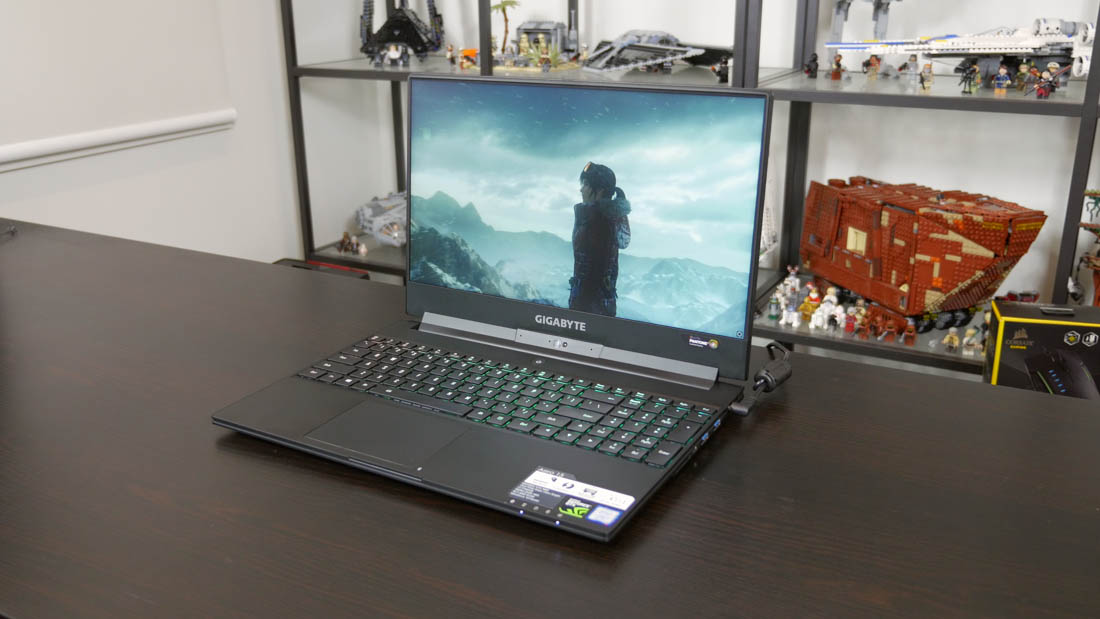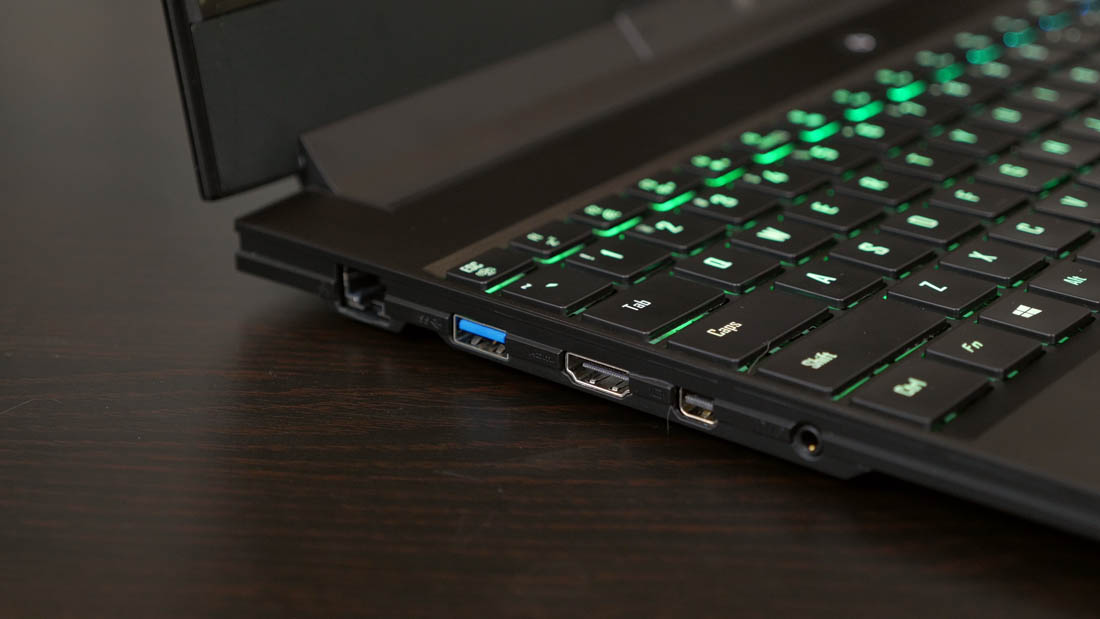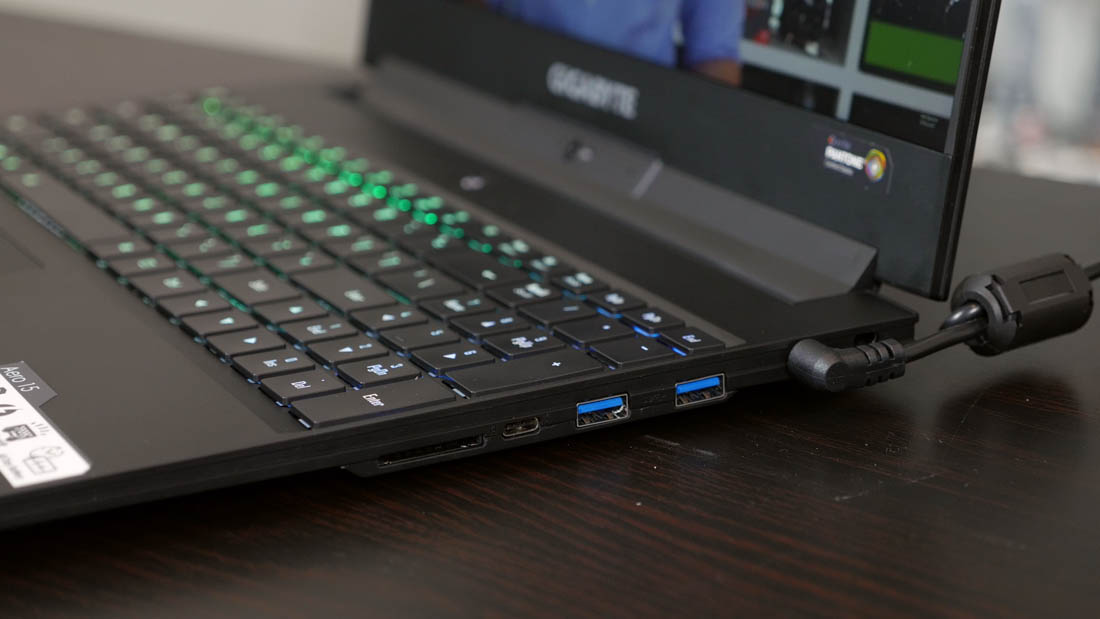Slim, light and portable gaming laptops are all the rage in the gaming laptop space right now. One of the strongest competitors in this space is the Razer Blade, which packs gaming-capable hardware in a beautiful aluminium unibody chassis, but other companies are coming hard after them.
Gigabyte with their new Aero 15 is one such example. It packs a Core i7-7700HQ quad-core processor and a GeForce GTX 1060 6GB GPU, which we know is well suited to 1080p gaming. There's also up to 16GB of RAM and two M.2 SSD slots, kitted out with a 512GB SSD in my review unit. Impressively, Gigabyte has included a 94 Wh battery so the Aero can be easily used on the go.
Having used a few Gigabyte laptops in the past, the Aero 15's build quality impressed and surprised me. It's not at the same level as the Razer Blade, but the mostly-metal chassis with clean aesthetics is a decent improvement on what I've seen from Gigabyte in the past. It's reasonably understated as well, making it suitable for business use, unless you opt for the striking green or orange color options; my black review unit is perfect for the style I enjoy.
My main gripe with the Aero 15's design is the grooved plastic seam around the edges, which doesn't look fantastic and it feels somewhat strange to hold. Aside from that, though, there's a lot to like about the build.
One of my favorite aspects is the slim-bezel design similar to Dell's XPS range. Gigabyte claims this has allowed them to fit a 15.6-inch display into the body of a 14-inch laptop, and this certainly appears to be the case when comparing the Aero 15 to other 15.6-inch gaming laptops, most of which use enormous bezels. The Aero 15 is a bit larger than the Razer Blade, although the Aero 15's display seems massive in comparison due to its edge-to-edge design. More gaming laptops should use this sort of display design, it's awesome.
As I mentioned, the Aero 15 is a bit larger than the Blade, and that's not just in footprint: the Blade is thinner and lighter as well. But when comparing the Aero 15 to other 15.6-inch gaming laptops, Gigabyte's offering is pretty darn attractive, at 19.9mm thick and 2.1kg heavy. Sure, MSI's GS63VR Stealth Pro is thinner (17.5mm thick) and lighter (1.8kg), but it has a larger footprint due to wider bezels, and a battery that's a whopping 40 percent smaller. Those requiring a workstation on the go won't want to put up with the GS63VR's poor battery life, despite how portable it is.
Gigabyte has kitted out the Aero 15 with an essential range of I/O: three USB 3.0 Type-A ports, HDMI 2.0, Ethernet, an SD card slot, Thunderbolt 3 (USB Type-C), a 3.5mm audio jack, and even mini-DisplayPort. Surprisingly, not all gaming laptops support Thunderbolt 3 despite having USB Type-C ports, so I'm glad Gigabyte didn't cheap out here.
The slim display bezels mean the webcam is placed below the display, which gives it an awkward angle for video chatting. I don't mind this compromise to make the bezels so slim, though undoubtedly it will annoy frequent webcam users. As for the speakers, don't expect anything amazing: there's absolutely no low end to be found here, which leads to a tinny audio experience.
Gigabyte as made a big deal about the display on the Aero 15, claiming it is "X-Rite Pantone Certified." It seems Gigabyte are attempting to position this laptop as an option for creative professionals that demand color accurate displays, although the product page for the Aero 15 doesn't specifically say it has been calibrated, just it has "passed the test by X-Rite Pantone".
The display itself is a 15.6-inch LCD with a resolution of 1920 x 1080. Gigabyte doesn't state whether the panel is TN or IPS, though with a contrast ratio around 1200:1 and reasonable viewing angles, it's closer to IPS than TN in my opinion. The display also exhibits 320 nits of peak brightness and is limited to a 60 Hz refresh rate with no variable refresh support.
I was astonished by the color accuracy of this display out of the box. Using the default "X-Rite Pantone" display mode (you can change display modes in the Gigabyte Smart Manager app), the Aero 15 recorded excellent levels of accuracy. White levels were perfect, at an average of 6520K across the grayscale range, while I recorded an average grayscale dE2000 value of just 0.56, which is phenomenal for a laptop display. Any dE2000 value under 1.0 is considered indistinguishable from true accuracy and therefore suitable for professional users.
Color performance was also excellent. In saturation sweeps, the Aero 15 reported an average dE2000 value of 1.16, while our custom ColorChecker test saw an average value of 1.53. This laptop has the best out-of-the-box calibration I've yet seen, making it perfect for creative professionals that demand color accuracy. There's no point messing around with other display modes: leave it on the X-Rite Pantone mode for the best experience.
As for calibration, there's not much point here considering the default performance, but I gave it a go anyway. Calibration didn't affect grayscale performance much, however both saturation and ColorChecker performance improved to average dE2000 values below 0.6; an excellent result.
The Aero 15 keyboard is decent. Its travel distance is good for a gaming laptop, with a nice clicky response to the rubber dome keycaps. The amount of force required to activate each key makes it a great option for both typing and gaming. The layout is respectable as well, especially the large sizes for the left modifier keys. The numpad is a welcome inclusion, although it is a bit close to the main keyboard.
Gigabyte includes full RGB backlighting in the Aero 15 with the ability to individually customize the color of every key. You can achieve awesome effects through the Gigabyte Fusion utility, and you can also create profiles for each game that illuminate just the keys required for the game. The utility and customizability isn't as well featured as Razer's competing offering, though it's nice to see another laptop with full RGB keyboard lighting.
The trackpad is from ELAN, and in the past I'd tell you this meant it was a piece of garbage. However, this time around the ELAN trackpad here is reasonable. It's not fantastic - there are still some tracking and gesture issues at times - but it's actually usable, unlike ELAN's previous offerings. Definitely get an external mouse for gaming though.






